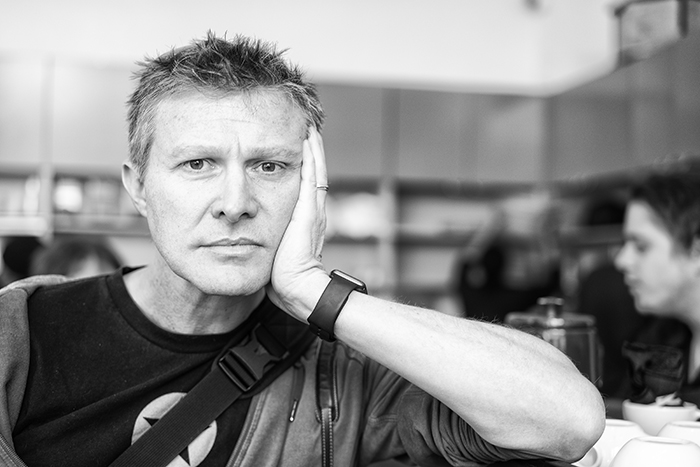I am a retinal neuroscientist, and photographer. My scientific work involves understanding the topology of neural circuitry, and what the evolution of neural circuitry can teach us about information processing. The work is funded through the study of disease and understanding how neural structure, organization and circuitry changes in neurodegenerative disease.
This site serves as a filtered view of my world through photography and as a tacit personal reminder of why I work in retinal and visual sciences. Understanding how we perceive the world through neural circuits involved in vision is compelling enough. But understanding how neural circuits are altered in diseases like retinitis pigmentosa, glaucoma, age-related macular degeneration, Alzheimer’s and multiple sclerosis drives the work.
I am the PI/Director of the Marclab for Connectomics.
My Google Scholar Link is here.
My list of publications can be seen here.
MyNCBI link here.
My photographic work has been published or discussed in: NPRs Science Friday, National Geographic, The Smithsonian, Wired, Popular Science, Popular Mechanics, Science, the Washington Post, MSNBC, io9, Mother Nature Network, The Guardian UK, CNET, the Huffington Post, NewScientist, The Washington Times, Defense Technology International, Boing Boing, War is Boring, The Washington Independent, The NIH Director’s Blog (twice!), World Politics Review, Combat Aircraft, Mental Floss Magazine, USA Today, Warships International and others.
I’ve also had gallery work presented in the Museum für Gestaltung in Zürich and Art Access in Salt Lake City and had materials/photo credits used in documentary films, and numerous books on various topics.
I can also be found editing the worlds first online textbook, Webvision.
Contact: bryan.jones@m.cc.utah.edu
Photo above, courtesy of Christopher Michel.

I am very happy that you research this kind of work. I am blind in my right eye, since I was 9 years old coming from Germany. I have compensated for the lack of vision but sometimes wonder what it feels like to have two eyes, which is why I have a Leica. Love the camera and love the feel and construction of the lenses. I have a Leica M9-P and various other Leica film cameras. Love your articles and enjoyed reading them. Now I teach Visual Arts at Lyndon State College in Vermont.
Thank you for the feedback Harry. Gotta say that the Leica rangefinder design is something near and dear to my heart. Love the way it works. Do you have a place online where you post your images? Flickr? I’d love to see your work.
These are stunning images that hold great appeal for me as a birding and photography enthusiast!
Thank you Pamela! Birding is an amazing reminder of how complex and beautiful the world is around us. More to come for sure.
Absolutely amazing photography! I stumbled across your website by chance while I was looking up Janelia (how I would love to see it for myself one day). I’m so happy to see great art and science combined as it is done in your pictures. Art and scince tend to be pitched against one another, but I believe they’re a match made in heaven. Lacking good photography skills, I draw science comics instead. ;) Thank you for sharing your pictures with the world!
Thank you BotsandBrains! I wish I could draw. Great website you have and I hope you can make it to Janelia one of these days.
I read your article about your unfortunate experiences with Leica. I have a Leica M2 which I love and I still use it to shoot film. But I am amazed by the quality of the build and the images I get with my Fuji cameras. The XPro1 rekindled my love for photography the way my M2 did. And you’re right, Fuji customer service is the best! Happy shooting.
Thanks for the reply Mark. There is still lots to love about Leica and the quality of the images. I’m just so disappointed about the service…
Stumbled here through Twitter with your very honest accepted and rejected proposals – I’m a research astronomer myself and know the challenges!
The portrait photography is amazing. I’ve always wanted to take portrait photos but I have no idea how to ask collaborators or for the candid shots. How do you do this?
Thank you.
The portraiture became a bit of a focus after a friend, @strobist commented that he did not see any people in my photographs on a photo review. When we have meetings with colleagues, I simply ask now. Most folks are totally cool with it.
Great.
I never found moving E-Microscope-Pictures from the Pedunculus area of living retina before.
I am a eye doc in Germany. The Synaptic Sweeping Ribbon the other (https://prometheus.med.utah.edu/~bwjones/2015/03/first-connectomics-ir-toolkit-demonstration/) helped my theory a lot.
Compare with “contractile vacuole” in you tube. A very old Invention of nature to regulate Osmotic Pressure.
I know, how the Retina, our nervous System and our mussels are working.
That is a Revolution.
If you are interessted, tell me.
Hi! I found you through a person on Twitter who recommended you after I uploaded a video of my son using his cane for the very first time on Oct. 5th, 2020. A little background, my son is a 4 year old who was diagnosed at 6 months with septo-optic dysplasia. He wears glasses to see if it stimulates whatever vision he may have. Growing up he’s been delayed in his devopment but never ceases to amaze me with how much he is able to do when given the opportunity. Do you know of others who may be of help to my son with studies or anything for a hope of him to finally be able to see even a little if possible? Thank you for your time if you get to read this.
Hey Lisset,
I’ll have Jeff Pettey ping you on Twitter with the contact information of a couple of specialists in this arena.